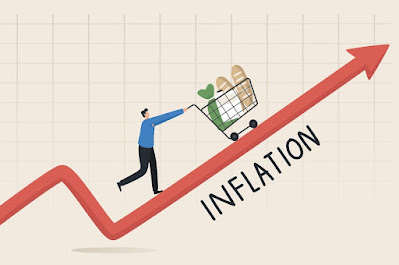Now is the Time to "Transfer" Your TFSA
Since the Government introduced the Tax Free Savings Account in 2009, there has been a lot of confusion on how contributions and withdrawals work.
For the first year, people used a TFSA like a regular bank account, putting money into the account, taking money out of the account, and then putting money back into the account.
This is allowed ONLY if you have available contribution room.
What does that mean?
Let's say you started the year with $5,500 of TFSA contribution room. You receive $2,000 from your (extremely generous) grandparents. You put the entire $2,000 into your TFSA High Interest Savings Account. After a few months, you need $500 to pay for an emergency car repair so you withdraw the money from your TFSA. A few months later, you deposit the $500 back into your TFSA.
Pretty simple right?
Not quite. Remember, a TFSA doesn't work like a regular bank account.
This is what is happening with your TFSA according to the Canada Revenue Agency (CRA).
So how would you move money between accounts without over contributing and without paying any banks fees to transferring YOUR money?
Simple.
You withdraw the money at the end of December and then re-contribute your money in early January.
Not only will you avoid CRA tax penalties, but you will also avoid transfer fees. Cool, right?
In an investment account, you just have to sell all your shares/units and initiate a transfer out of your TFSA. If you have a regular trading account, you can move your money there first before transferring the money to another financial institution as it may take a while before the money is moved and you don't want to miss the December 31st "deadline".
When January 2nd rolls around (or in this case January 4th), you just need to buy all your shares/units again. Depending on when you withdrew the money, you may need to wait a bit longer until you can re-purchase your shares/units.
For the first year, people used a TFSA like a regular bank account, putting money into the account, taking money out of the account, and then putting money back into the account.
This is allowed ONLY if you have available contribution room.
What does that mean?
Let's say you started the year with $5,500 of TFSA contribution room. You receive $2,000 from your (extremely generous) grandparents. You put the entire $2,000 into your TFSA High Interest Savings Account. After a few months, you need $500 to pay for an emergency car repair so you withdraw the money from your TFSA. A few months later, you deposit the $500 back into your TFSA.
Pretty simple right?
Not quite. Remember, a TFSA doesn't work like a regular bank account.
This is what is happening with your TFSA according to the Canada Revenue Agency (CRA).
- You have $5,500 of contribution room.
- You deposit $2,000. You now have $3,500 of contribution room.
- You withdraw $500. You STILL have $3,500 of contribution room.
- You deposit $500. You now have $3,000 of contribution room.
- On January 1st of the next year, the CRA takes your withdrawals for the year and gives you back the contribution room. So they return $500 on contribution room. your new total is $3,500.
- You also get additional contribution room based on the new year. Assuming it's still $5,500, your new available contribution room balance is $9,000.
In short, any contribution room lost to withdrawal isn't returned until the NEXT year!
This doesn't affect fictional situation above... but what if we change the amount the generous grandparents gave to $5,000 and the emergency car repair to $1,000?
- You have $5,500 of contribution room.
- You deposit $5,000. You now have $500 of contribution room.
- You withdraw $1,000. You STILL have $500 of contribution room.
- You deposit $1,000. You have now over contributed by $500!
- The CRA will consider you over contributed by $500. As a result, they will tax you 1% each month for the amount of the over contribution until you take the money out of your account.
Of course, if you're smart, you won't be using the TFSA as a savings account. You'd be investing the money in a TFSA, likely with a brokerage account.
There is another way to transfer the money between registered accounts. You need to complete a form and have your financial institution initiate the transfer. However, you'll also need to wait 6-8 weeks for the money to be transferred. Additionally, most likely you will incur a transfer fee. When I transferred my money from Tangerine to Questrade, I didn't incur a fee. However, a fee was implemented earlier this year.
So how would you move money between accounts without over contributing and without paying any banks fees to transferring YOUR money?
Simple.
You withdraw the money at the end of December and then re-contribute your money in early January.
Not only will you avoid CRA tax penalties, but you will also avoid transfer fees. Cool, right?
In an investment account, you just have to sell all your shares/units and initiate a transfer out of your TFSA. If you have a regular trading account, you can move your money there first before transferring the money to another financial institution as it may take a while before the money is moved and you don't want to miss the December 31st "deadline".
When January 2nd rolls around (or in this case January 4th), you just need to buy all your shares/units again. Depending on when you withdrew the money, you may need to wait a bit longer until you can re-purchase your shares/units.


Comments
Post a Comment